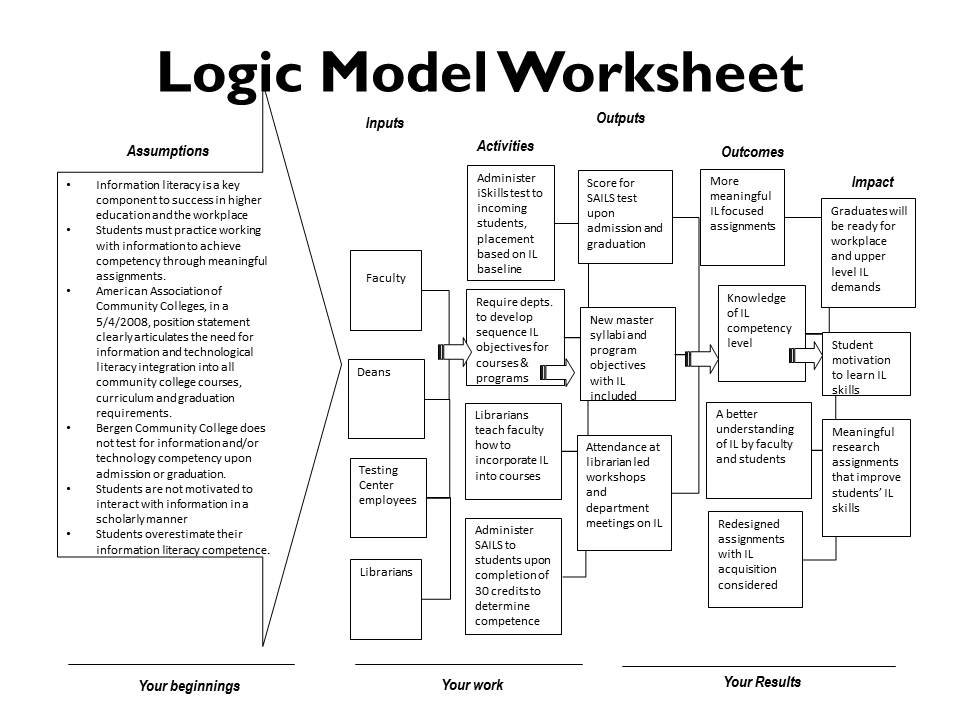Students come to higher education from a K-12 system that does not fully fund or support their libraries and librarians. A critical deficiency of skills occurs when funding to school libraries is cut, librarians are working in numerous schools and students do not have easy access to scholarly materials, and certified librarians to guide their exploration, before, after and during school hours.
This deficit affects students’ information literacy (IL) competency as well as teaching faculty and faculty librarians at the community college. Testing of English and mathematics abilities is commonplace upon admission to community college, however, information literacy testing is not. Although there are graduation requirements for an information literacy course at a handful of community colleges, this practice is rare.
Utilizing a logic model like the one from the Kellogg Foundation (2004, January) a new program for a fully integrated information literacy program is possible. The activities associated with a comprehensive information literacy program necessitate input from faculty, librarians, and administrators. Activities associated with this project require student IL competency measured upon admission with the SAILS (Standard Assessment of Information Literacy Skills) test and at crucial points throughout their academic career utilizing course assigned research projects. To ensure an increase in information literacy competency through this program; there must be an improvement in the research assignments and faculty understanding of IL. Faculty librarians work with the departments through workshops and liaison duties to educate faculty about IL, creating meaningful research assignments and appropriate sequencing of IL objectives for the discipline. IL instruction at the community college level gives a solid foundation for discipline-specific research in higher-level college courses.
Outputs include new master syllabi that include IL objectives. Academic programs also include comprehensive sequencing of IL skills with an expectation of competently utilizing higher-level skills in 200 level courses. Additional outputs include the SAILS scores and attendance at workshops and meetings to educate faculty on IL integration. Outcomes bring together the activities of students, faculty, and librarians to incorporate meaningful assignments into courses. Students will understand where they place on the IL skills test and the expectation for competency. Newly redesigned assignments are produced based on a deeper understanding of IL by faculty. These assignments include actively engaging with information.
The impact is significant for students as IL skills are necessary for today’s workplace and employers continually note a deficit in these skills with recent graduates. Student motivation to acquire IL skills will increase after taking the SAILS test where deficiencies are documented. Students commonly overestimate their IL competency. The SAILS scores provide accurate documentation of IL competency. Faculty will consistently be incorporating comprehensive, meaningful IL into course assignments for students.
References
W.K. Kellogg Foundation (2004, January). Logic model development guide. Retrieved August 21, 2016 at http://www.smartgivers.org/uploads/logicmodelguidepdf.pdf
